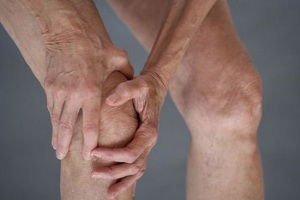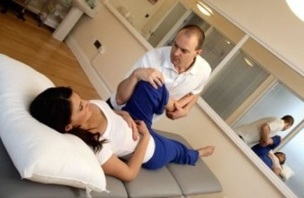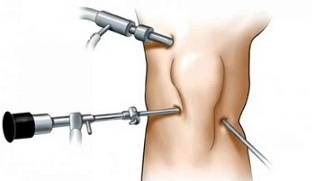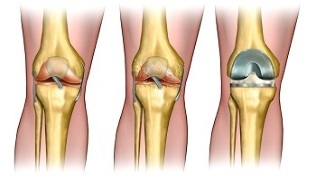Grade 2 gonarthrosis of the knee joint can not only reduce the patient's motor activity, but also worsen the quality of life in general. The only reason for this may be the pain and inability to exercise, which until recently seemed insignificant.
By comparing the changes between the initial and second stages of the disease, a person begins to understand that without proper treatment, the condition will worsen.
Causes of the disease
Often, the cause of stage 2 disease is irresponsible treatment and failure to follow the doctor's recommendations regarding physical activity and lifestyle changes.
In a joint already affected by the disease, blood circulation and metabolic processes slow down to such an extent that tissues cannot receive nutrients and oxygen without outside help. In case of refusal of treatment or "later" delay, there is an acceleration of destructive processes in the joint, and as a result, the disease in the mild stage becomes more severe.
symptoms
Stage 2 of knee gonarthrosis is characterized by the following manifestations:
- increasing pain: pain attacks gain a certain regularity (after a good night's sleep, a long period of rest, physical exertion);
- joint stiffness, which usually disappears after a short walk in the morning;
- The knee joint grows, the relief is corrected - all the physiological bulges and deposits in the joint are no longer identified. When standing, it can look like "hanging" skin on the patella. In the case of squats, it is clear that one knee (affected by Gonarthrosis) is much larger than the other, is healthy, and has a spherical shape;
- A characteristic crisis is heard when moving the knee;
- The flexion and extension of the joint is severely limited.
People with second-degree gonarthrosis can rarely do without taking painkillers, because knee pain also becomes a concern at rest. This is due to spike-like growths in the bone tissue of the joint that irritate and traumatize all the structures of the knee.
How does a doctor make this diagnosis
In most cases, a patient with a deteriorating health condition is diagnosed with Gonarthrosis, and the attending physician may order an X-ray to assess changes in the joint.
CT, MRI, and laboratory blood tests may be recommended if your doctor has reason to suspect that other illnesses are related to gonarthrosis. This is necessary to rule out a complicated gonarthrosis course with infections and soft tissue damage that can penetrate the bloodstream to the joint.
Complications of the disease

When left untreated or not treated responsibly enough, grade 2 gonarthrosis can quickly go beyond the final "stage" to the final stage where the pain becomes a constant companion and the joints undergo irreversible changes and deformities.
In addition, weakened joint tissues are susceptible to infections, and any viral or bacterial systemic disease can cause serious complications during gonarthrosis. The most common, but less dangerous, is an infection of the joint cavity with the formation of a purulent substance that can spread to soft tissues - muscles, skin.
Treatment
In the treatment of grade 2 gonarthrosis, the focus is on relieving pain, slowing or stopping the degenerative process in the joint, preventing complications, and improving knee mobility.
Medication
Drugs used in the treatment of grade II gonarthrosis are divided into the following groups:
- Anti-inflammatory drugs.These include the latest generation of non-steroidal anti-inflammatory drugs (NSAIDs), which eliminate the inflammatory process in the joints and reduce pain.
- Chondroprotectors.This group of drugs helps to protect cartilage tissue from further destruction and to strengthen the processes of regeneration inside.
- Hyaluronic acid preparations,, analogues of natural lubrication of the inner surface of the joint. These drugs reduce friction in the knee joint and prevent further wear and tear on the cartilage. In some cases, intra-articular injections of hyaluronic acid are indicated (for example, with very poor blood circulation in the joint, which prevents other forms of the drug from reaching the affected tissues).
- aids.These include vitamin preparations, immunostimulants, biological extracts from plants (aloe, echinacea, etc. ) designed to improve blood circulation in the articular tissues and thus speed up their metabolic processes.
Physiotherapy, massage, sports therapy

Treatments such as physiotherapy, massage, and exercise therapy can be considered adjuvant in the treatment of grade 2 knee gonarthrosis and are rarely used as independent treatments.
Physiotherapy (UHF, phonophoresis, ultrasound therapy, magnetotherapy) is used to improve blood circulation in the joint and stimulate the recovery process inside.
One of the most effective physiotherapeutic procedures for the treatment of osteoarthritis is MLS laser therapy, which has the ability to regulate the intensity of laser radiation. Therapy uses constant and pulsating wavelengths, which allow deep penetration into the tissues and a clear clinical effect. MLS laser treats all joint diseases, osteochondrosis, hernias and other diseases of the musculoskeletal system.
It is recommended to perform massage in 10-15 sessions daily or one session every day. Massage improves the blood supply to the joints, normalizes metabolic processes in the joints, and provides a more effective effect of drugs on the tissues affected by the disease.
In the diagnosis of grade 2 osteoarthritis of the knee joint, massage is prescribed with the use of drugs (chondroprotectors, anti-inflammatory or irritating ointments, cooling and anesthetic foreign substances). factors.
A set of physiotherapy exercises is prescribed to the attending physicians after evaluating the effectiveness of drug treatment and is selected taking into account the individual characteristics of the disease and the general health of the patient.
Lifestyle adjustment
Lifestyle adjustments are one of the most important conditions for effective treatment. With Grade II Gonarthrosis, you must follow these guidelines:
- Reducing the load on the diseased joint.This is done using orthopedic canes that allow you to distribute the load while moving so that the knee joint is minimally involved. It is important to choose the right cane for your height - it should be from the wrist to the ground when you are standing.
- Diet.For this disease, it is recommended to reduce the consumption of animal protein foods (eggs, meat, fish, whole milk), carbohydrates (baked goods, sweets) and any foods and beverages that contain synthetic flavors, sweeteners, preservatives.
- Weight loss.Obesity is one of the risk factors that increases the likelihood of metabolic diseases in all tissues, including joint tissues. In addition, excess weight is an unnecessary burden on the joints.
Surgical Treatment
Surgical treatment can be divided into two types: arthroscopy and endoprosthetic.
Each operation has its own list of indicators in which the intervention will be most effective.
Arthroscopy

Arthroscopy is a low-traumatic surgical method that uses miniature lighting, surgery, and video equipment to enter the joint space through small holes.
Read:
- presence of bone neoplasms (osteophytes) that interfere with joint mobility;
- deformities of joint tissues that can be corrected without large-scale surgical intervention;
- The need for chondroplasty, which can significantly slow the progression of the disease and restore joint mobility.
Endoprosthetic
Endoprosthetic - replacement of an artificial knee joint made of the same, durable and hypoallergenic material as natural bone tissue.
Over time, the prosthesis assumes all the functions of the "native" joint and allows you to return to normal life.
Read:
- has no effect after a long course of conservative treatment;
- rapid development of the disease;
- Changes in the joint significantly impair the patient's motor function, causing severe and frequent pain and / or the risk of disability.

Absolute contraindications include systemic diseases that make it impossible to perform any surgical manipulation.
The attending physician measures the risks and benefits of surgical treatment and, based on the results, decides whether to proceed with surgery or a conservative course of treatment.

















































